Dinner in the Land of the Thunder Dragon
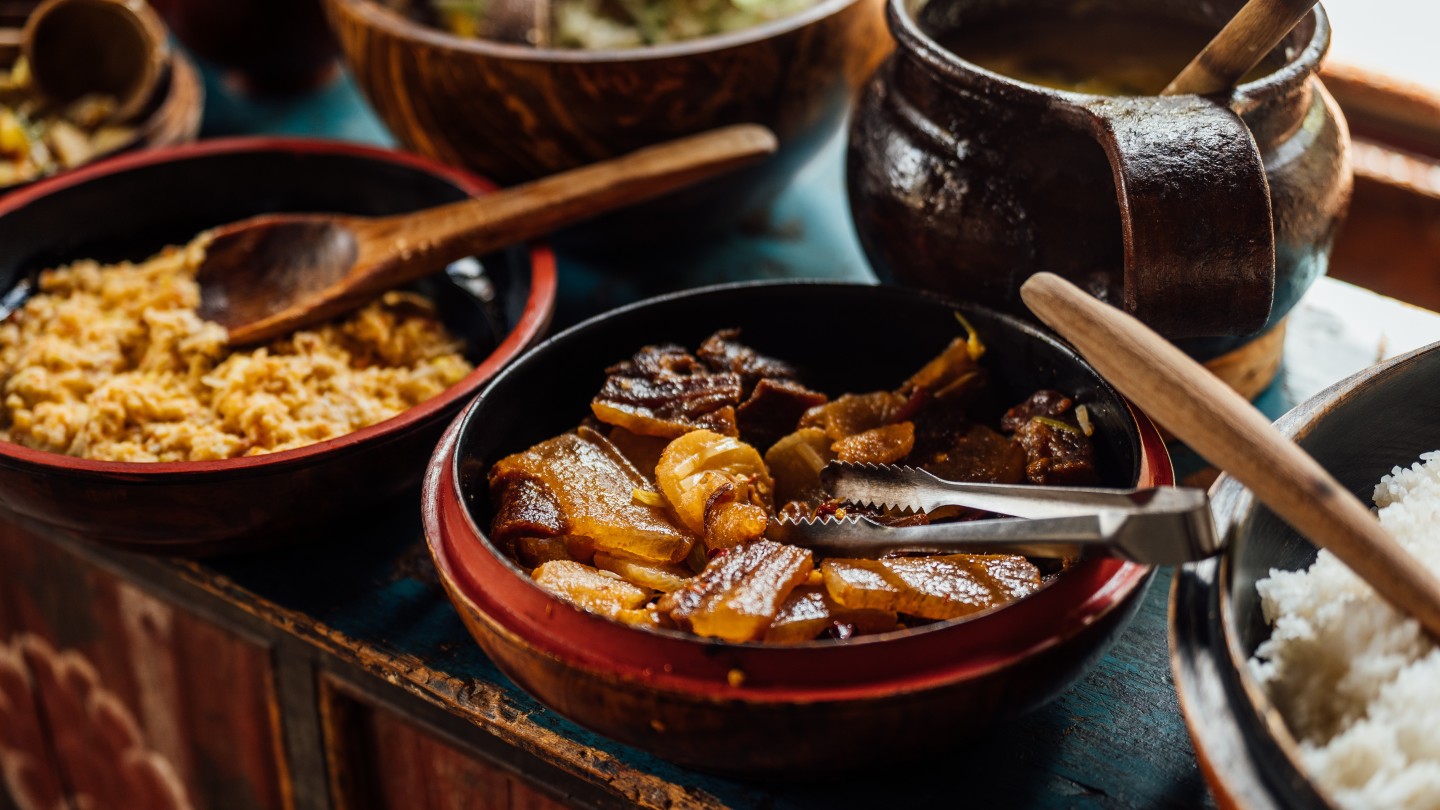
Roula Khalaf, Editor of the FT, selects her favourite stories in this weekly newsletter.
Fresh off the plane in Bhutan, and my first taste of the mouth-scorching heat for which the food of this tiny Buddhist kingdom is known comes squirting out of an orange squeezy condiment bottle in a dumpling bar called Momo Corner. The bar is located off the main drag in Paro, a small town on the river Paro Chhu, where the country’s main airport is based. It’s the first port of call for most visitors.
There isn’t much to Paro town centre – a couple of streets lined with wooden shopfronts and cafés. Nor is there much to Momo Corner. Its porch is just about big enough for a table or two. The den inside is as cosy as a broom cupboard with rug-covered benches pushed against the walls and a hatch in the corner that gives onto the kitchen. For all that, the swing door doesn’t rest for all the people coming in and out, everyone from crimson-robed monks to office workers to builders in high-visibility vests.
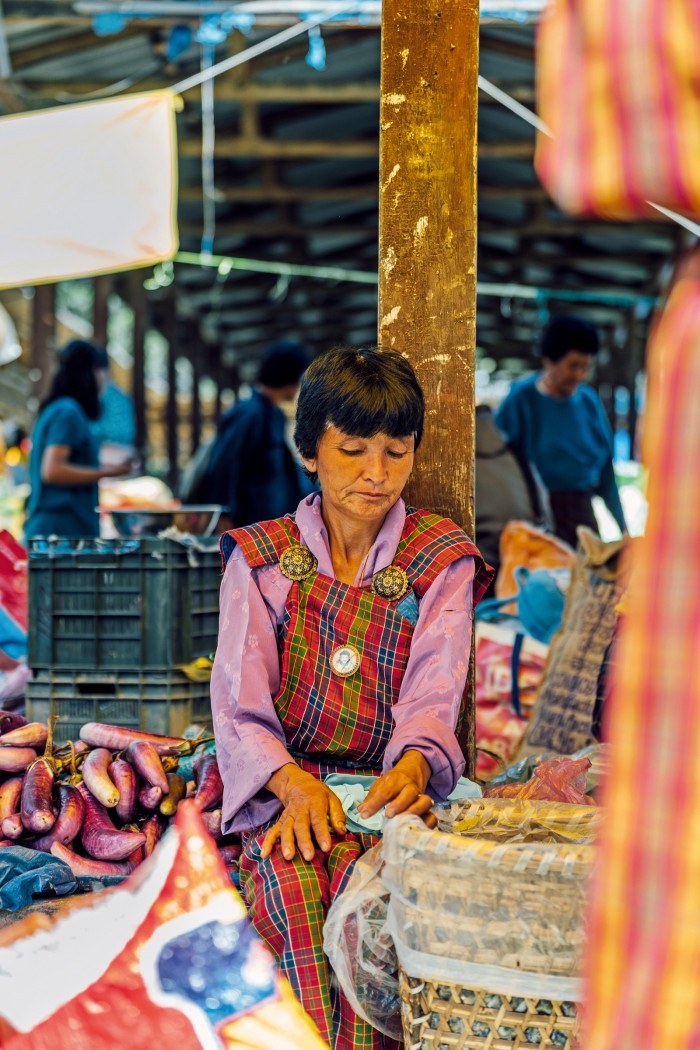
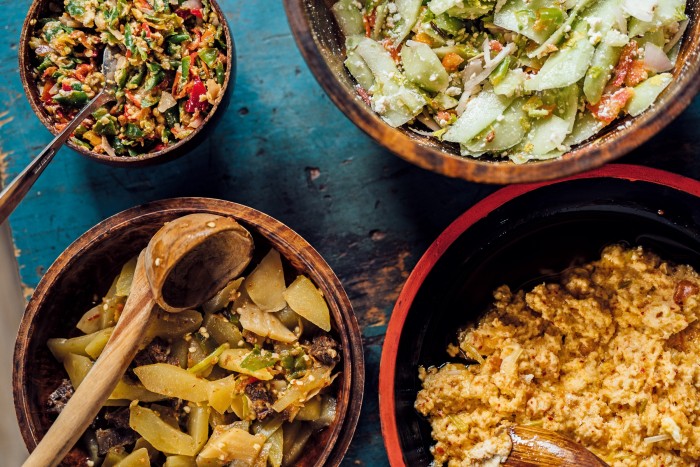
The menu is short. You can have momos (dumplings), thukpa (noodle soup) or koka (noodles). My guide Ugyen Dendup (“UD” for short) recommends one plate of beef momos and one of potato. The dumplings come five a portion and are best eaten dipped in chilli paste (ezay), squeezed from the aforementioned bottle. The momos are delicious, the ezay even better, stoking my insides and leaving my lips tingly and swollen.
People journey to the Land of the Thunder Dragon in search of many things. Beauty. Wonder. Enlightenment. They make the pilgrimage to its temples and monasteries. They hike its Himalayan trails. They marvel at its largely untouched green vault and wildlife, including endangered species such as snow leopards, takins and red pandas.
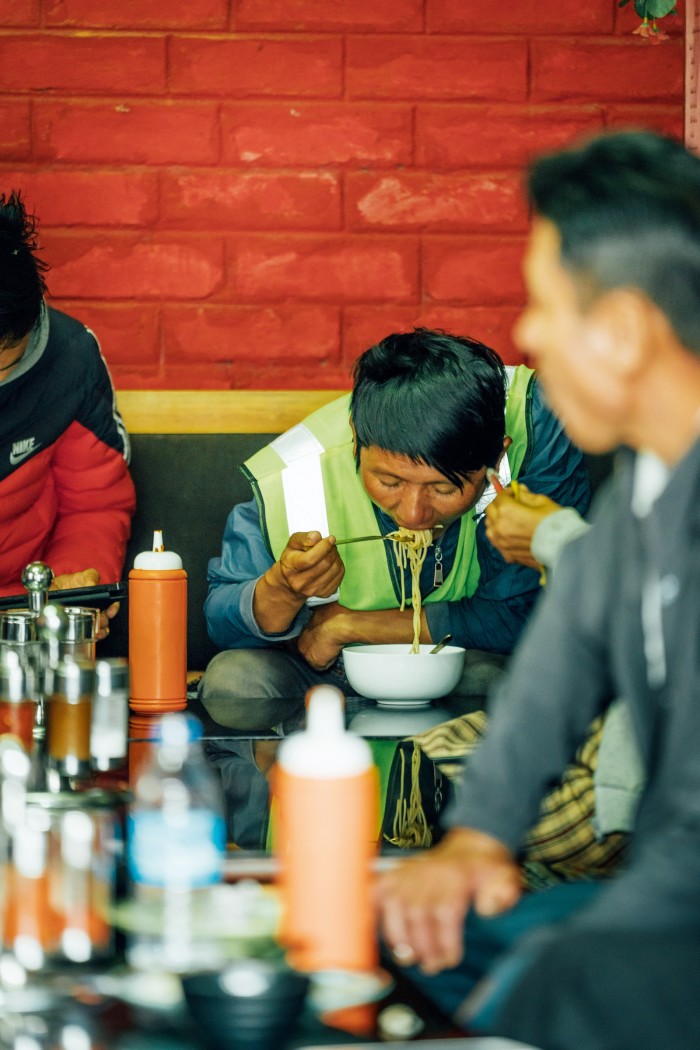
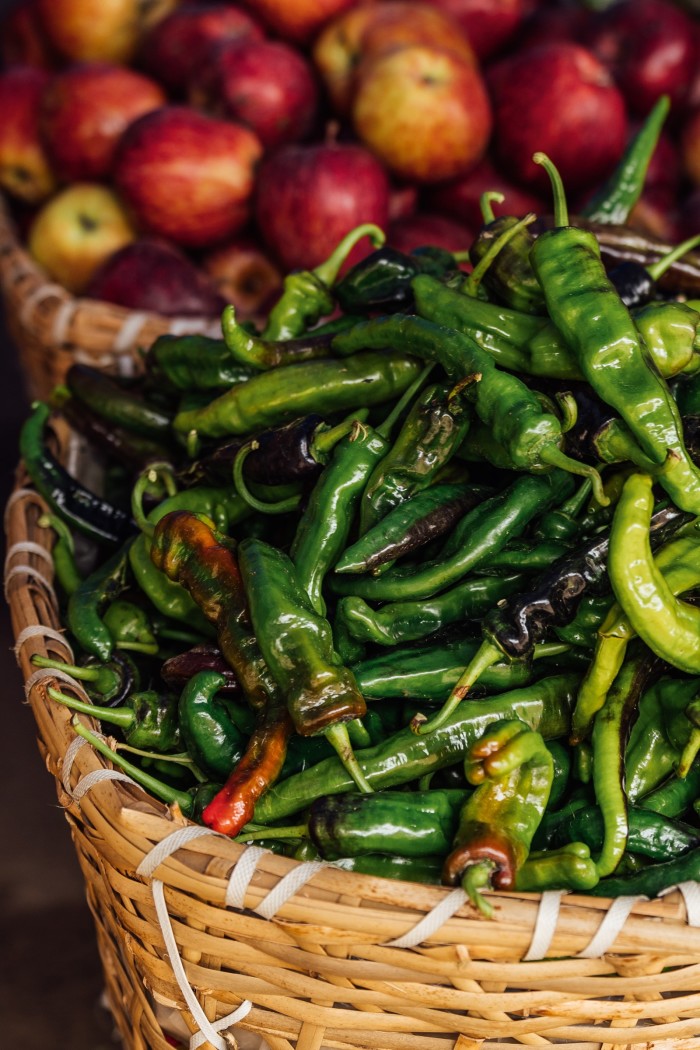
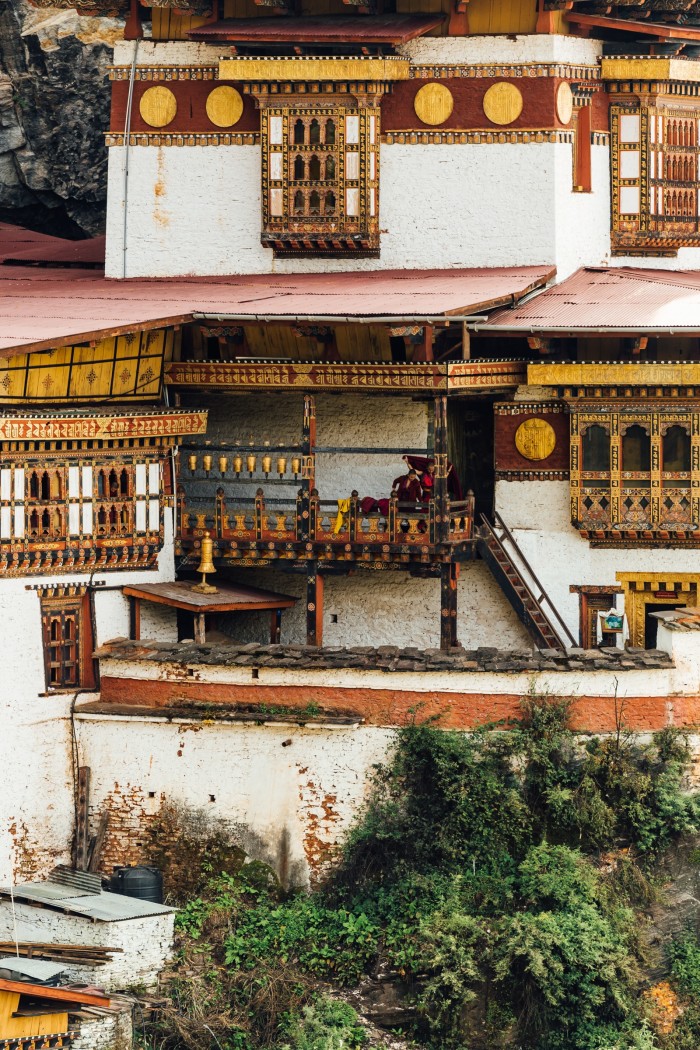
They should also come to Bhutan for a food culture that remains distinct from other Himalayan countries. Unique ingredients include fiddlehead ferns (naki), crow’s beak (a green pod-like vegetable) and shur kam (white-blanched sun-dried chillies that are just as spicy as the red variety.) Red rice is a staple, as are dried meats such as shakam (beef jerky), yaksha (dried yak) and dried pork belly (sikam). And if you’re wondering why the pork is so fatty, it’s because wild marijuana grows in abundance here. The swine munch on the foliage and fall into long dopey slumbers, which results in meat that is anything but lean.
Embracing the Bhutanese table also means coming to terms with its generous use of chillies. During my stay in September (the beginning of high season), the harvest has just been completed and red peppers are everywhere, piled high in markets, drying on corrugated rooftops and hanging in garlands from rafters. Red and green chillies turn up in countless dishes including sikam tshoem (braised dried pork with sun-dried chilli) and nosha hentshey tshoem (braised beef, mustard greens and dry red chilli curry). Both figure on the menus at the Como Uma hotels in Paro and Punakha (Bhutan’s former capital), where I stay during a week-long trip.
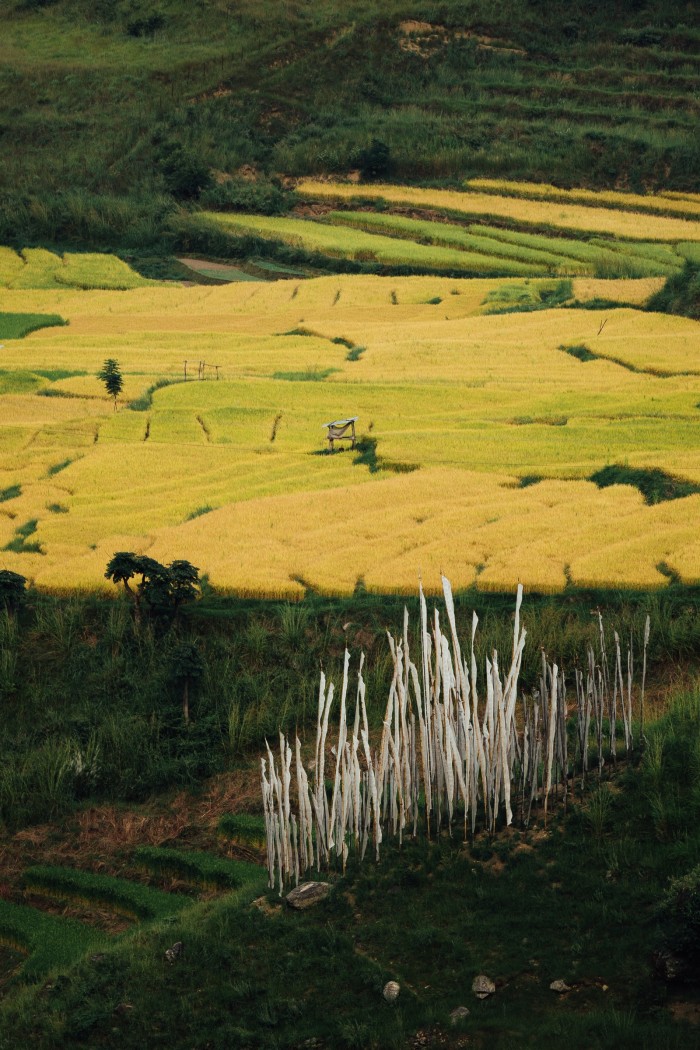
The hotels’ executive chef Tshering Lhaden returned to her native Bhutan in 2016 after three years as head chef at Como Cuisine Dempsey in Singapore. In Paro and Punakha, she lays on Bhutanese and western menus, where you find fusion dishes such as tagliatelle with slow-braised yak, which tastes as tender and sweet as any red wine beef ragù. It’s thanks to Tshering that I get to try dishes like olatshey maru (pork with wild orchid curry) and a deliciously gingery jasha maru (spiced chicken curry). But I can’t help feeling she is pulling her punches when it comes to chillies. At times I find the food mild. Being of Indian descent, I was weaned on chillies. And so, briefed on my wish to “eat heat” like the locals, UD whisks me off for bathup (a spicy broth with noodles) at a Paro haunt called Kuzu. Here, I slurp from a bowl loaded up with firepower. Packing the sharp heat of green chillies, the deep burn of red chilli powder and the numbing citric bitterness of Sichuan pepper, the dish is sinus-clearing and eye-watering in the most exhilarating way.
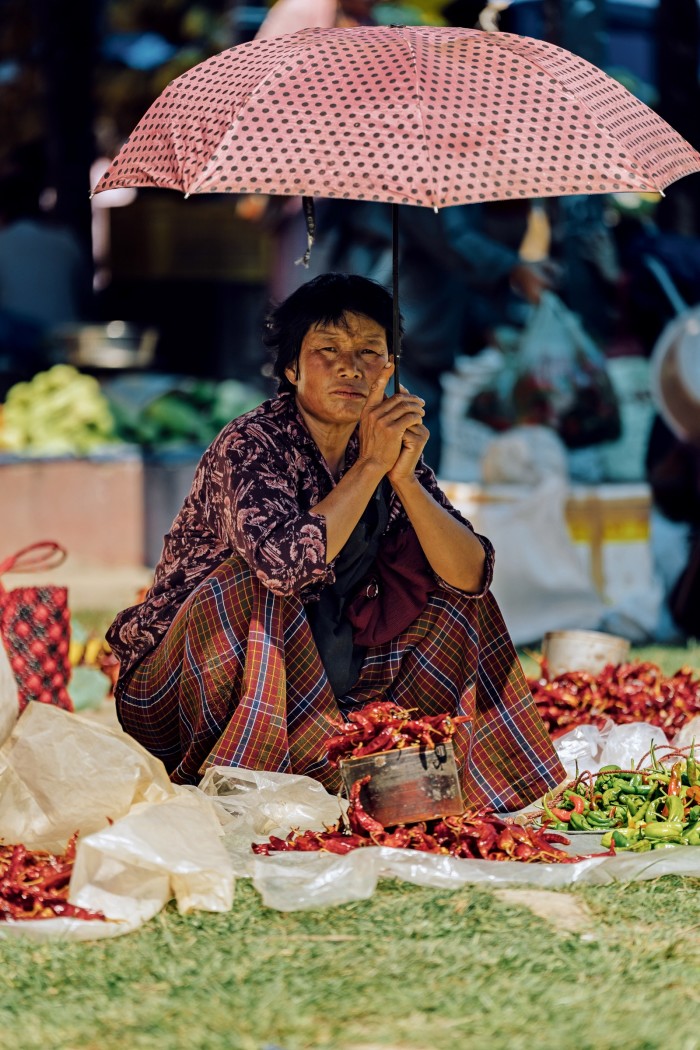
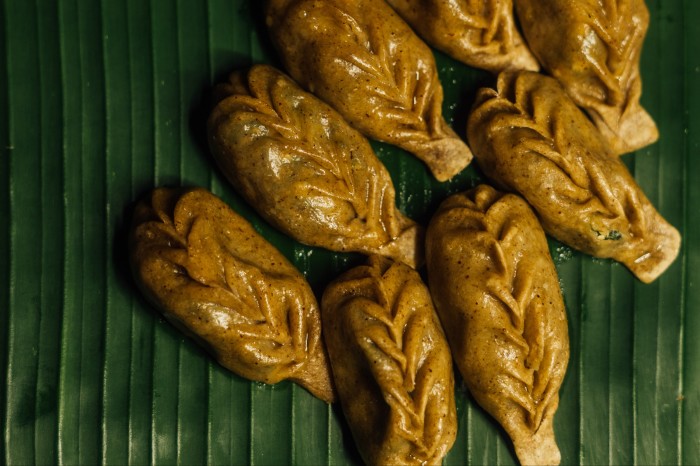
Bhutan’s national dish – ema datshi – manages an even greater coup, pairing large green chillies (prepared as a vegetable, not a seasoning) in a buttery broth with another cherished ingredient, cheese. If you ever enjoyed jalapeños with melted cheese on nachos or green chillies on pizza, this fiery cheese concoction will feel like a homecoming. Cheese is ubiquitous in Bhutan. Locals chew hardened and sometimes smoked cubes of it, on sale at roadside kiosks, like gum. (It will break your teeth if you’re not careful.) Datshi also comes in every combination – cheese melted with mushroom, spinach, radish, aubergine, carrot… you name it.
One afternoon, after a short hike along the valley from Punakha Dzong (the country’s most beautiful fort-monastery), we lunch at Happiness Field Village Homestay, a farm run by Karma Yangchen, which you can access via a chain-linked suspension bridge over rapids and across rice paddies. Visitors can camp on the grounds or stay in the farmhouse, where Yangchen cooks up an authentic Bhutanese feast. When we arrive, she is prepping sikam paa (braised dry pork with radish and chillies), plus gondo datshi (egg and cheese) and kewa datshi (potato and cheese). For the latter, she uses sliced potato, great wads of farm-churned butter, wheels of cheese and so many green chillies she loses count. Everything is glorious. I jump up for seconds. Best of all is the fresh chilli salad, which is zingy and crunchy and sprinkled with cheese. It turns up the volume on every mouthful.
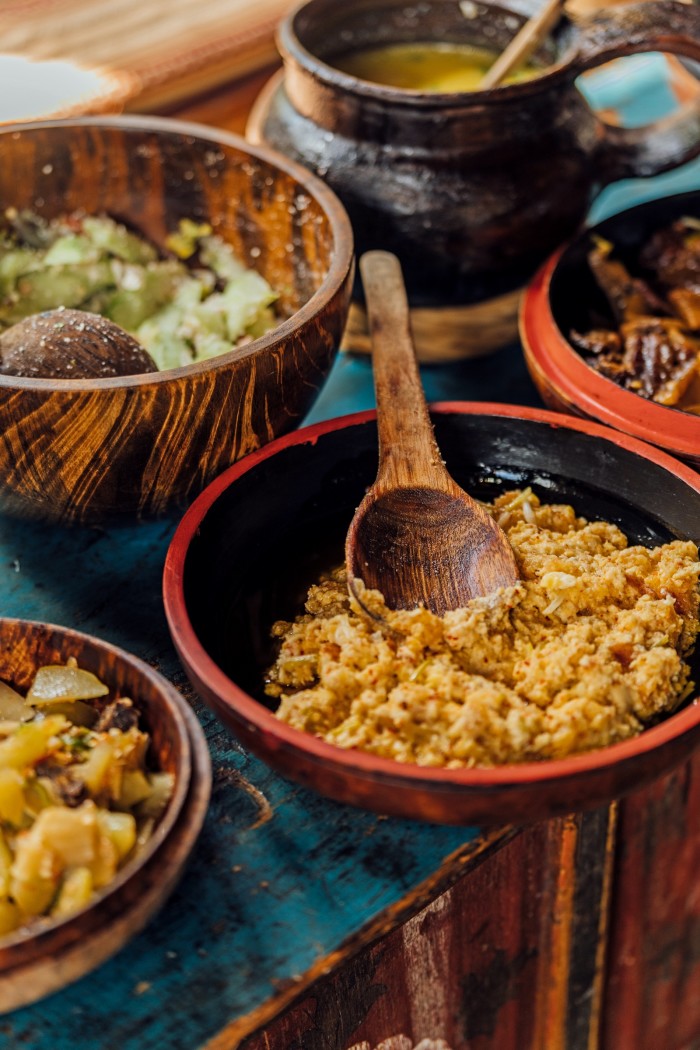
In the capital Thiumpu, I enjoy a respite from traditional cuisine at the food court Flavours by DSP, located within the city’s new riverside market Kaja Throm. The court is run by youth volunteers in orange uniforms, who you see everywhere in Bhutan. Known as De-suups (Guardians of Peace), they belong to the De-suung programme started by the King in 2011 to assist in nation building and charitable projects. During the pandemic, its ranks swelled as recruits trained in disaster relief were called on to assist hospitals, schools and rural communities. Last year, in part to address youth unemployment, the King instituted the De-suung Skilling Programme, which offers courses in everything from construction and digital marketing to CCTV installation and culinary arts. At Flavours they man the stalls, selling burgers, pizza, ramen, Hong Kong-style waffles and slurpies.
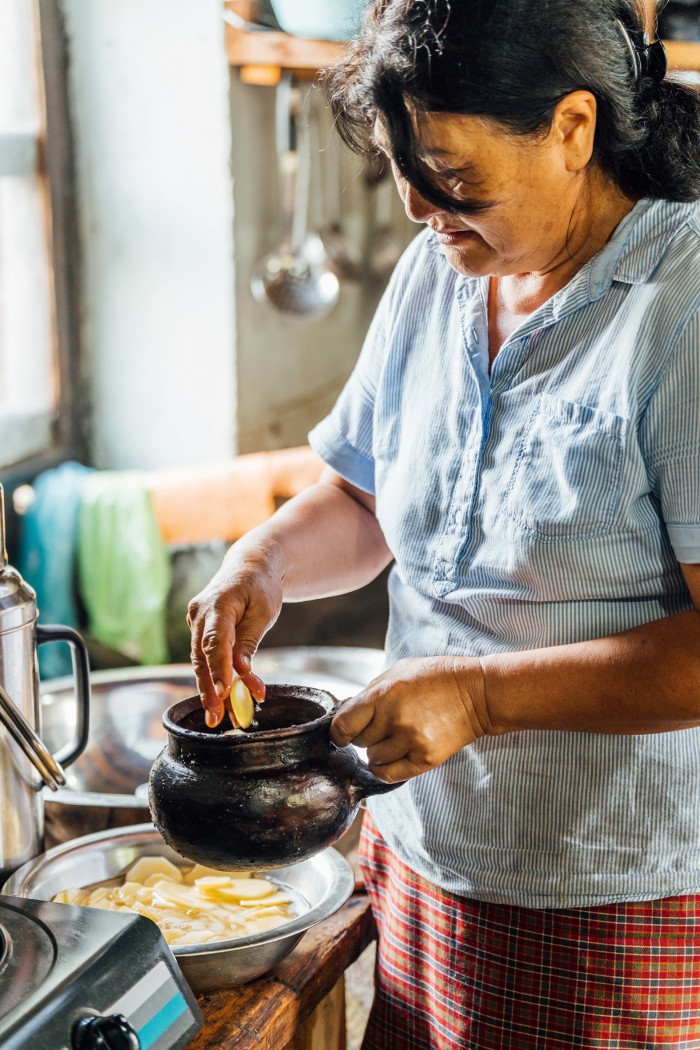
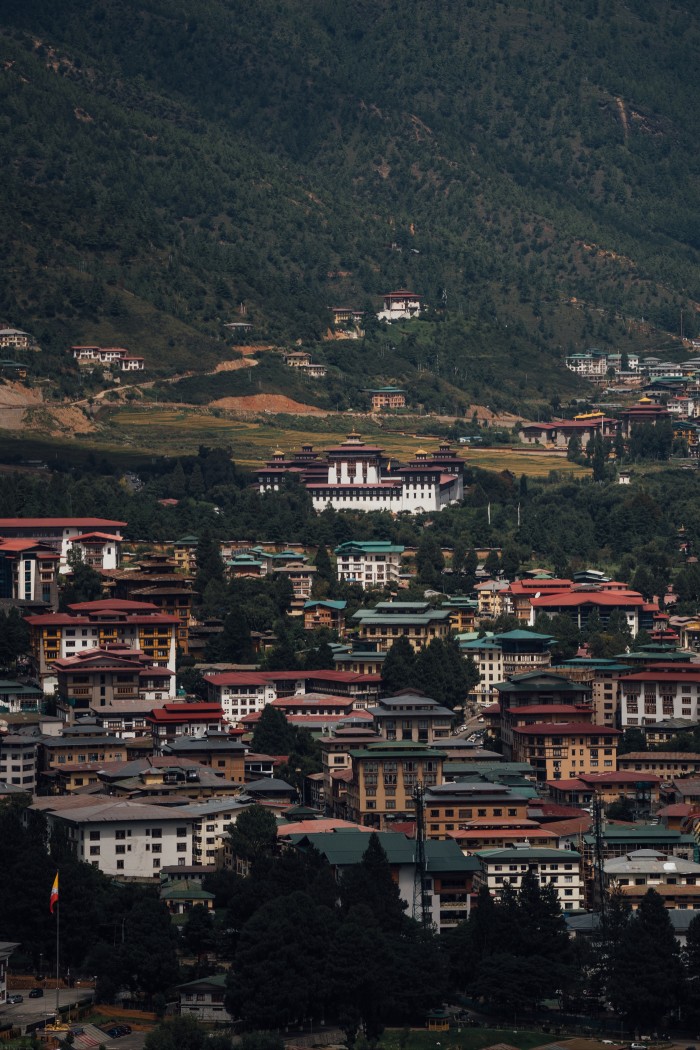
When young urbanites crave classic Bhutanese cooking, however, they head to Babesa Village Restaurant, a hugely popular eatery about 6km from the centre housed in a 600-year-old traditional home. Here, you sit on cushions at low tables in what used to be the kitchen. There is an original mud oven in the corner (just for show), a huge rolled-up bamboo mat hung from the ceiling and other historic artefacts including a palang (a moonshine container) on the wall. I order goep paa (cow tripe with chillies) and fried chimpa (liver with spring onion, black pepper and coriander). And though the tripe may have base notes of farmyard, these are still the tastiest bowls of offal I’ve ever eaten.
Next stop is the 3,000m-high mountain pass known as Dochu La to behold its 108 chortens (Buddhist shrines) and a 15th-century fertility temple dedicated to a famously randy Tibetan saint known as the Divine Madman. Throughout my trip, I see phalluses galore. They’re thought to ward off evil spirits. And on my final day, I trek up to Taktsang “Tiger’s Nest” monastery, perched on the side of a cliff, where I commune with monks and am moved to tears.
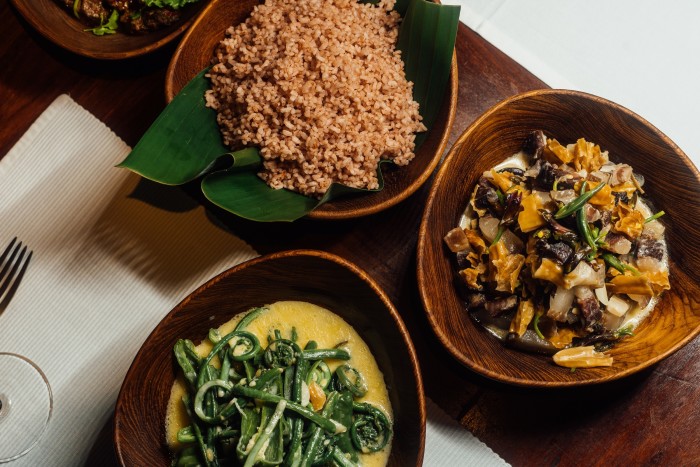
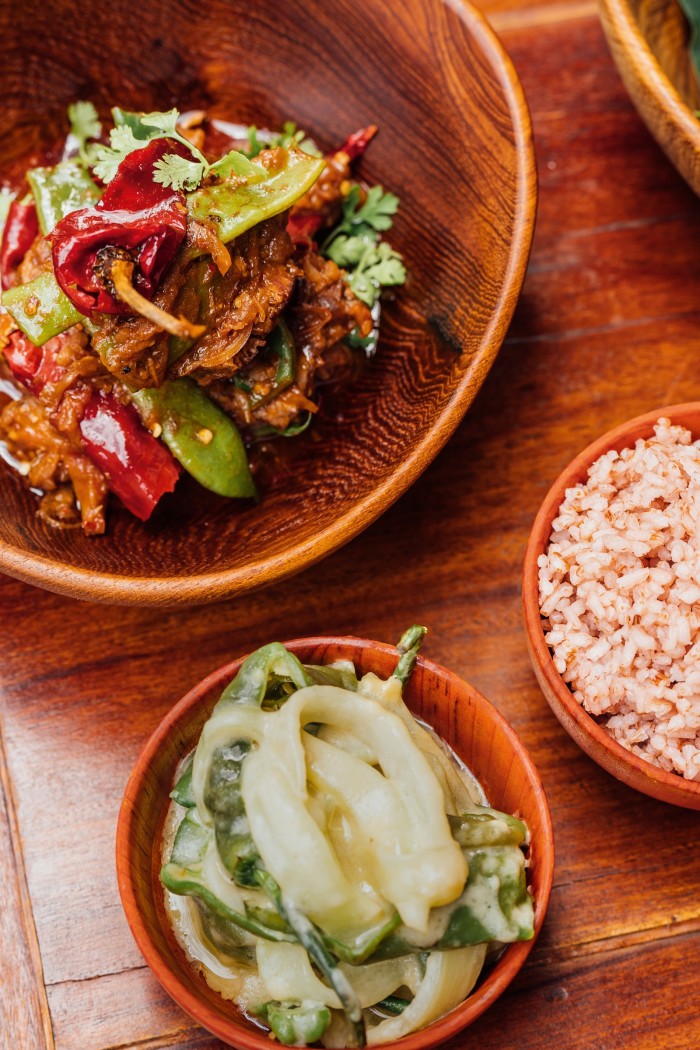
But before I leave Bhutan, I’m desperate to sample two local specialties. The first is yak hide, which the kitchen at Como Uma Paro prepares with Sichuan pepper, chilli and coriander. I’m expecting hardened, hairy scraps, but what turns up are translucent strips (like softened cartilage) that are spicy and chewy in a way I could get used to. The other is the mushroom – one of many varieties including chanterelle, Himalayan gypsy and matsutake for which Bhutan is renowned. Cordyceps, however, is the most prized. It sells from $45 per gram and has become a lucrative commodity for the yak herders and other mountain folk who are permitted to harvest it.
At Bhutan’s National Museum, I discover to my horror that cordyceps are actually dead caterpillars overrun with fungus: the parasitic fungus infects the larvae of ghost moths, grows inside the caterpillar and sends its spore-filled stalk through the head. Among its many properties, cordyceps are thought to boost stamina, libido and immunity. Mine is brought to me infusing a batch of ara, a rice wine that tastes like sake. It looks like a dead worm. And tastes like a soggy twig. For all those putative benefits, I think I’ll stick to the chillies.
The author travelled as a guest of Como Uma Paro and Como Uma Punakha, $8,234 for two people for a six-night stay
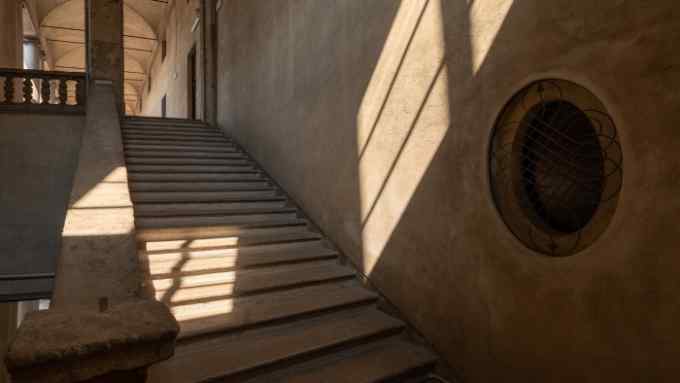
Comments